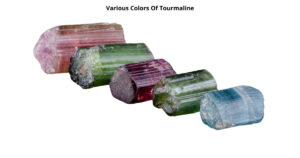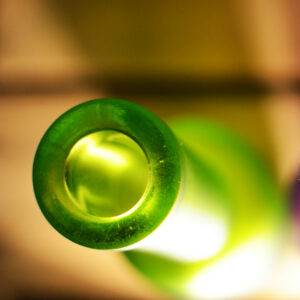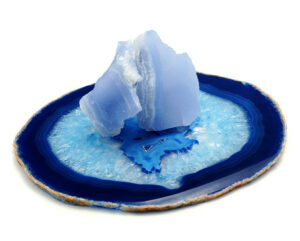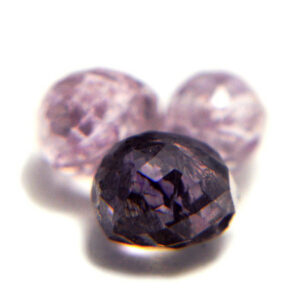What color is Hematite?
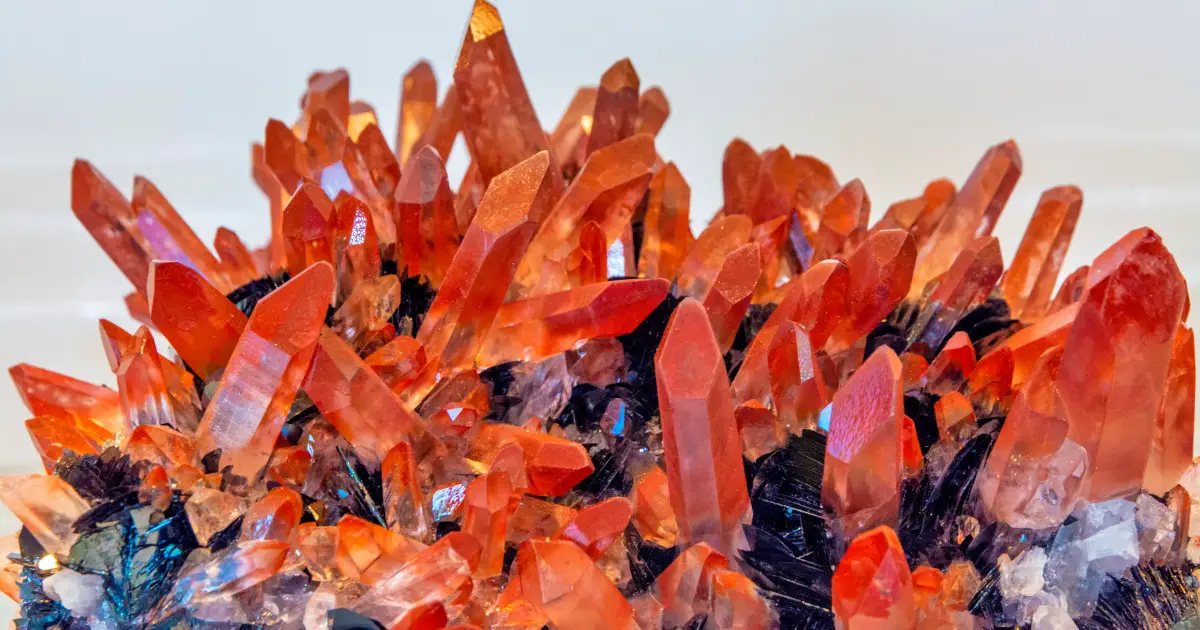
Hematite is an iron oxide stone that can be found in different colors depending on the variety in which it is found. It is found in all three forms of rocks: igneous, sedimentary, and metamorphic. Hematite is a rock mineral that has two extreme radicals of colors: red and black. In this article, we will explore what color is Hematite and various color occurrences.
Hematite, owing to its various forms, has various names. The gray crystals and the granular varieties carry a beautiful metallic luster that easily catches the eye of the beholder and are the more famous ones. Hematite in the form of fine grains is called the red ochre or the ruddle. Other varieties include the red ochre, which is used as paint pigment and for polishing glasses.
Suggested Reading: Hematite: Meaning, Healing Properties, Benefits And Uses
Table of Contents
What is Hematite?
Hematite is a heavy and hard mineral of oxide and of ferric oxide which consists of the most important iron ore. Hematite has a very high iron content which is 70%. Owing to its origin of name, which means “blood”, hematite is an iron ore consisting of bright red allusion.
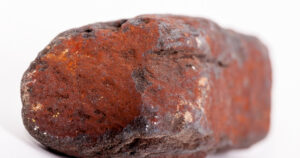
According to research, Hematite is one of the most abundant minerals that is present on the surface of the Earth. It is found in shallow crusts and is found in almost all the common rock-forming minerals such as the sedimentary, igneous, and metamorphic rocks throughout the earth.
Although hematite is found in abundance, it is still one of the most sought-after minerals due to the various color and lustrous surfaces of the minerals. This iron ore can also be found in various forms such as carboniferous, crystalline, fibrous, and many others.
Hematite might be widely acclaimed but its economic significance is comparatively very less. It is used in producing color pigments, separating heavy media, ballasts, and shielding radiations.
Where does Hematite get its color from?
Ferric oxide, which is the main component of the Hematite ore, is associated with the color red as can be seen in its soil compounds, sedimentary rocks, and other weathered products. Ferric oxide is a great pigment and very intense in color.
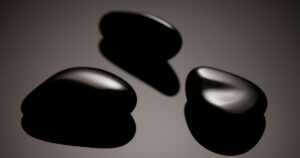
Hematite prevails as a red pigment in geological materials, which is the reason for the most commonly seen prevailing red color of the crystal. At the same time, other varieties of this mineral can be pale in colors such as light greenish-yellowish anatase like garnets and lavender phosphates. This leads to the various color variants that Hematite is found in.
What color is Hematite?
As mentioned earlier, Hematite has many variable appearances. These colors range from reddish-brown, silvery gray, ochre color, dark and silver-gray. The most common color is the rusty red color streak, all the other variants have at least a tinge of red.
The Luster of Hematite can arguably range from submetallic colors to purely metallic colors. the colors in which this iron ore can be found are red and this other sister variant colors, and black and its variants such as gray and silver.
Hematite has one of the most inconsistent color radiances that makes it difficult to identify its various forms. For any mineral, its color is determined by its ability and way of absorbing and reflecting light. This adds to the chemistry and crystal structure of the stone. What makes Hematite different is that its macrocrystalline forms are incongruent and the particulate forms are congruent.
Thus, the macrocrystalline hematites have smooth crystalline faces and absorb white light which gives them a neutral and silvery color. The crystals that are made of hematite are, therefore, silvery gray that has a strong metallic luster.
Red Hematite
Also known as the red iron ore, hematite is largely found in the color red. The fine-grained sandstones are red because of the hematic powder mixed in them. Sandstones are often reddish. The reddish-brown soils found are also due to hematite. Red granite owes its namesake to hematite. The red color of the hematite had been one of the most widely spread natural pigments since the beginning of humanity.
There are thousands of cave paintings that have used the natural pigment coming from the hematite powder. This is also known as the red ochre. Falu red or brownish-red used in the Swedish wooden houses is one of the notable instances of red hematite in use.
Silvery-Gray or Black Hematite
Often mistaken for black diamonds in jewelry and stones, the hematite crystal is very observable and eye-catching. It has a very deep luster and a shining smooth appearance. The crystal has also been used as an impersonation of black beads and used in jewelry owing to its color and its surface.
Uses of Black Hematite

Hematite and its Healing Powers
Hematite is a stone that has diverse healing properties. Hematite is said to have very calming effects on the mind of the bearer and even cloaking and shielding like a protective cloak around the clock. It is said to make you feel more confident and dominant while going around. This is because hematite enables you to invade and eject negative and toxic emotions from your mind, which makes you feel better as a person and more confident brims in your personality. The hematite is said to be bound to the root chakra which indicates balance and harmony and also a clear mind and decisiveness.
- Physical health: Being so rich in iron content, hematite is the stone that is bound to have connections with the bloodstream. There is no doubt that this quality of the stone makes it one of the bests for increasing blood circulation in our body. Hematite stones are very useful when the bearer has problems with blood clotting, heavy periods, and other blood-related health issues.
- Mental health: The crystal of hematite is a source of great strength. It is rightfully referred to as the “Mind Stone” too. For people who are weak at heart or easily get self-demeaning thoughts, Hematite drills away from the negative feelings from the inside and leaves you only with good and refreshing, and assuring thoughts. It gives immense courage, strength, and willpower and leads to an exhibition of confidence. It boosts the character of an introverted and shy or sometimes timid individual and helps them overcome it.
- Hematite as a jewelry stone: The jewelry made of hematites is said to have very magical effects on the beholder. The stone, when comes in contact with the stone soaks your skin with confidence and power. Bracelets made of hematite, are said to be giving huge amounts of unshakeable confidence.
- Hematite used as crystal therapy: One of the most remarkable qualities of a hematite stone is its healing power. Hematite is a stone that heals and recuperates and helps even in the regeneration of new skin cells. This stone can be used y therapists on patients who have a long history of self-torture, feeble mind, and negative thoughts.
Using Hematite as a Lucky Stone
Because of its grounding and stabilization, hematite is an excellent stone for keeping the mind and soul balanced. Hematite, therefore, is counted as a lucky stone that adds to the luck of the beholder.
How to identify Hematite?
Owing to its name, Hematite will have a rusty red color shine in it. It will be comparatively heavier than other mineral crystals and will also have a metallic sheen. The stone made of hematite generally looks metallic because of the presence of iron content. It is a shiny ad that comes in black mostly when in stones. It can also come in shades of brown and reddish-brown.
Is Hematite magnetic?
Since Hematite is the mineral ore of iron oxides, has a weak response to magnets and does not react that much in a magnetic field.
How to care for Hematite crystals?
Since Hematite is a healing crystal, it is often recommended to keep it dry. So using water to cleanse it is not an option. Thus, using concentrated salt cleansing is the best way to clean a hematite crystal.
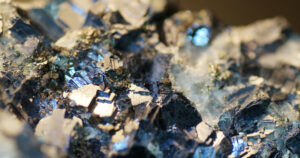
Bury the crystal completely in a container of sea salt which is dried and keep it for some time. After that, remove the stone and throw away the salt residue in the ring which can be harmful to long-time body contact.
Conclusion
Although Hematite is a vastly available stone and not magnetically strong enough, it does serve its purpose as a crystal. Hematite is great as a mind refresher to keep one’s willpower strong. It cleanses the mind of any negative thoughts and emotions and brings us a positive and confident personality. It even helps in physicality wherein the blood circulation of the body is redressed and made healthy.
Thus, hematite is largely applicable as a crystal and is great to carry around or even to keep at home.
Frequently Asked Questions
- What does Hematite look like?
Hematite is a darkish or blackish but opaque stone that has a metallic luster. This crystal is extremely eye-catching due to its brilliant shine. Hematite is also a semi-hard stone that uses a metallic polish to take the form of silver, bright red, dark black, or deep blue.
- Is Hematite red or black?
Red is the natural color occurrence of Hematite although it can be found in other lustrous colors such as light shades of black, gray, light yellowish, and even blue.
- Is Hematite always black?
Hematite is not a black stone at all. It can be silvery black. The huge consistency of the red pigment does not allow a complete radical color to it, although once, during the late 1700s, hematite was found in both red and black color. The answer to this dynamic occurrence remains unsolved.
- Is Hematite blue or black?
The closest blue on color hematite can be the gunmetal blue, but the stone cannot be found in other definite hues of blue.
